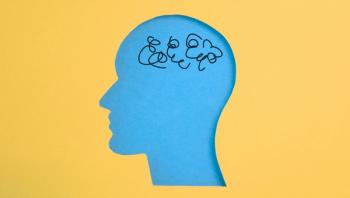
Extending the Life of Stimulant Therapy in ADHD
What impact do atypical antipsychotic agents have on the persistence of stimulant therapy in ADHD? Researchers sought to find the answer in a group of 40,000 children and adolescents.
Polypharmacy is becoming increasingly common in young patients with ADHD. Atypical antipsychotics are typically concomitantly prescribed with stimulants to manage the psychiatric comorbidities or behavioral symptoms of ADHD, but a concern is that they might reduce persistence of stimulant therapy. After all, their effects on the dopaminergic system are counter to those of stimulants. Also, stimulant monotherapy itself loses its persistence over time in a significant percentage of patients.
What impact do atypical antipsychotic agents, in fact, have on the persistence of stimulant therapy in ADHD?
Using a major health claims database in a retrospective study, the study examined the predictors and impact of concomitant stimulant and atypical antipsychotic use in young patients with ADHD. The study population included 40,000 children and adolescents, aged 6 to16 years. All study subjects had a diagnosis of ADHD and were prescribed long-acting stimulants. Most-96%-were receiving monotherapy. The remaining 4% were also receiving an atypical antipsychotic.
The patients were followed for 1 year from the date of initiation of stimulant therapy. "Persistence" was the total number of days that a patient remained on the stimulant. The predictors and impact of concomitant stimulant and atypical antipsychotic use were respectively determined using multiple logistic regression and multivariate Cox proportional hazards regression in the context of the Andersen Behavioral Model of Health Services Use. The model, developed in 1968 by a health services professor at University of California, Los Angeles, identifies factors leading to health services use by analyzing a person’s predisposing factors (such as age, race, and beliefs about health care), enabling factors (such as access to care), and actual or perceived need for health care.
The study found that stimulant persistence was an average 71 days longer in pediatric patients who were concomitant users of long-acting stimulants and atypical antipsychotics compared with users of stimulant monotherapy. After controlling for other factors, the addition of an atypical antipsychotic to stimulant therapy was associated with a 15% improvement in persistence.
Among factors associated with concomitant prescription of a long-acting stimulant and atypical antipsychotic were sex, insurance type, and the source of the prescription. Boys were 38% more likely to receive concomitant therapy than girls. Publicly insured pediatric patients were 63% less likely to receive stimulants and antipsychotic concomitantly than privately insured patients. Not surprisingly, psychiatrists were more apt to concomitantly prescribe antipsychotics and stimulants than were primary care physicians, and patients with psychiatric comorbidities were much more commonly prescribed antipsychotics along with stimulants.
The researchers concluded that concomitant use of atypical antipsychotics along with stimulants might improve management of ADHD and its comorbid symptoms, although further studies are needed to demonstrate the effectiveness and safety of this treatment strategy.
References:
1. Bali V, Kamble PS, Aparasu RR. Predictors of concomitant use of antipsychotics and stimulants and its impact on stimulant persistence in pediatric attention deficit hyperactivity disorder. J Manag Care Spec Pharm. 2015;21:486-498.
Newsletter
Receive trusted psychiatric news, expert analysis, and clinical insights — subscribe today to support your practice and your patients.

















